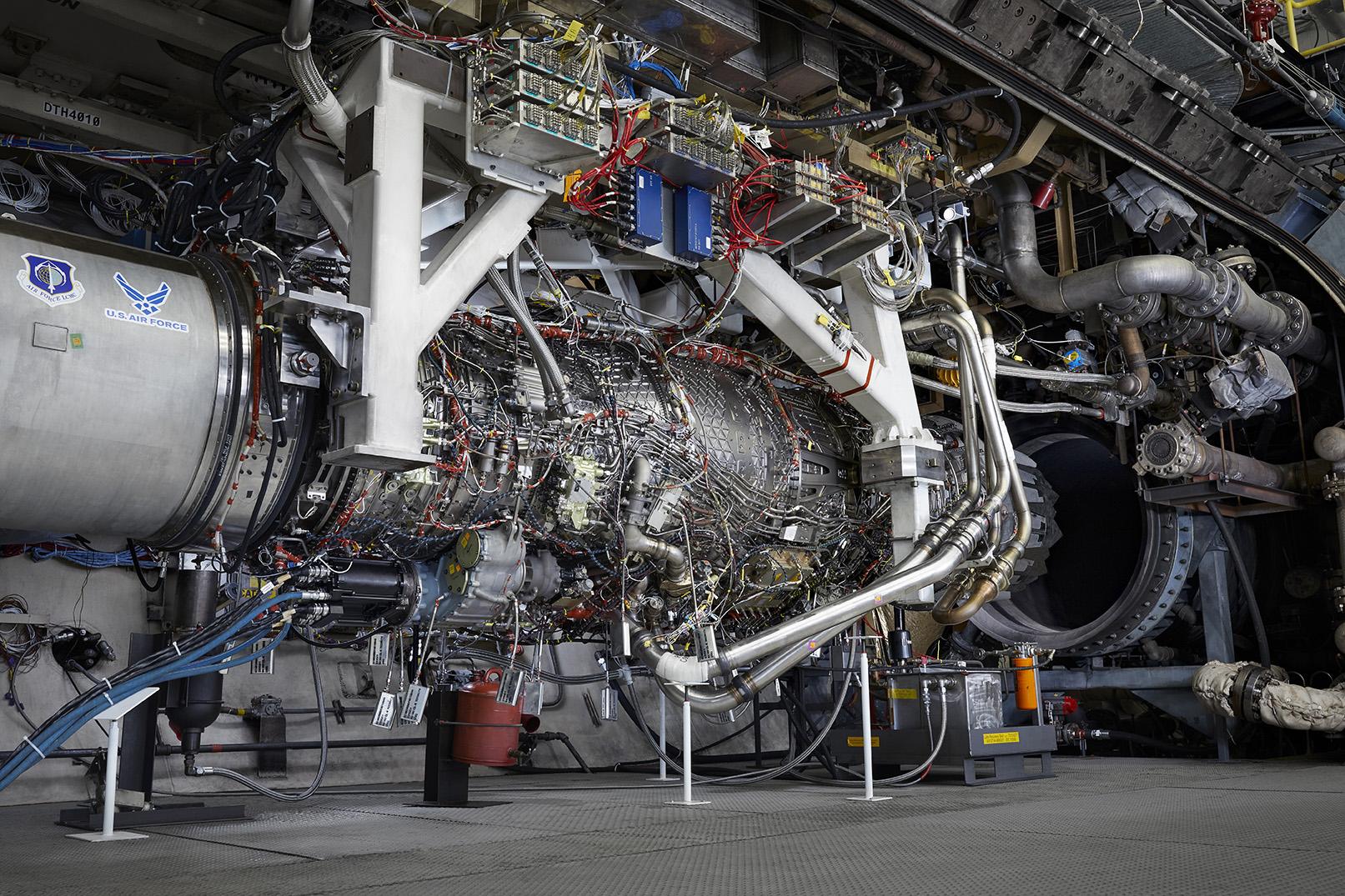
FARNBOROUGH—With ongoing ground tests of the General Electric XA100 adaptive cycle combat engine set to end soon, the engine-maker is studying how the advanced propulsion system—proposed for the Lockheed Martin F-35A/C—could be adapted to include the short-take-off-and-vertical-landing (STOVL) F-35B version.
The study is being undertaken with the F-35 Joint Program Office (JPO), Lockheed Martin and Rolls-Royce, the provider of the lift fan system which enables the F-35B version to operate in STOVL mode. Results of the study—which will outline the feasibility of modifying the variable cycle engine for operation in future versions of the variant now flown by the U.S. Marine Corps, Japan, UK, Singapore and Italy—will be available in time for the fall meeting of the JSF Executive Steering Board.
“We offer a 100% common solution between the F-35A and the F-35C—no structural redesign of either aircraft is required,” says David Tweedie, vice president and general manager of GE Edison Works Advanced Products unit. “For the B model that was initially outside the scope of what we undertook, but it's been 10 years of hard effort to really mature this technology and get this design to the point that we think we're ready to launch.”
“The B model does present certainly unique integration challenges without question, but now that we have the prototype design laid flat—it's in the test cell, it's running—we know what we've got,” Tweedie says. “Now, we are spending some time we are under contract from the JPO, working collaboratively with Lockheed and Rolls-Royce on the lift fan, to look at what can we do with the XA100.”
The potential modifications involve adapting the fan and compressor to attach to the drive shaft connecting the engine to the clutch of the gearbox that drives the lift fan. Other changes would be required to integrate the XA100 with the roll posts and other elements of the lift system.
According to Tweedie, the study tackles questions over how the proposed advantages of the XA100 be leveraged for the F-35B, “and what would be the capability improvements that we could provide to that platform? What are any incremental costs in development and time associated with coming out with a B model capability leveraged from what we're doing on the F-35A and F-35C?”
The study comes as GE nears the end of extensive tests of the engine at the U.S. Air Force’s Arnold Engineering Development Complex (AEDC) in Tennessee. The tests continue to show “good data,” Tweedie says. He adds that for the F-35A/C variants, the three-stream adaptive engine will offer around a 30% increase in range and a 20-40% improvement in acceleration. The XA100 is one of two experimental adaptive demonstrators contracted under the Air Force’s Life Cycle Management Center’s Adaptive Engine Transition Program (AETP). The other engine, the XA101, is under development by Pratt & Whitney.


Comments